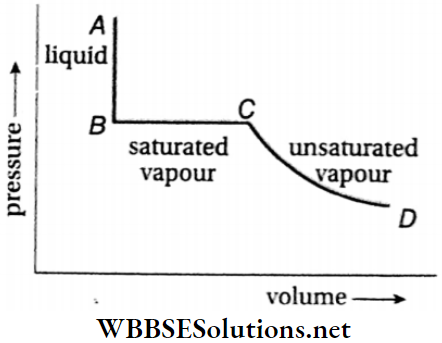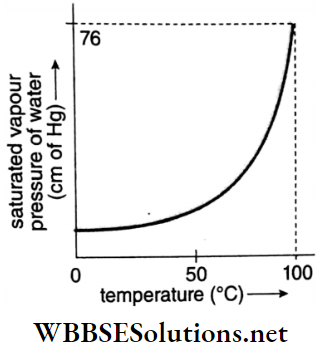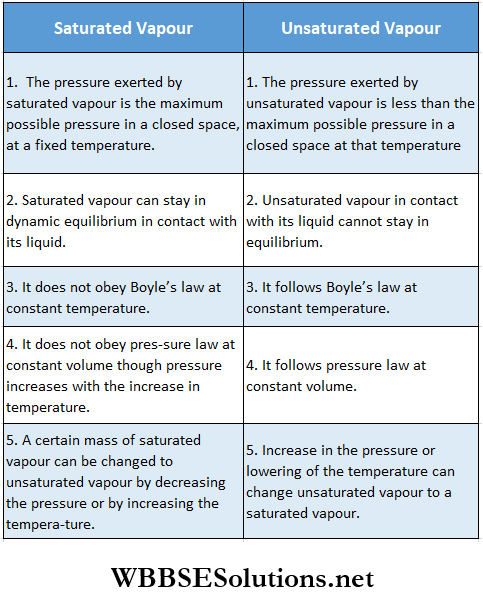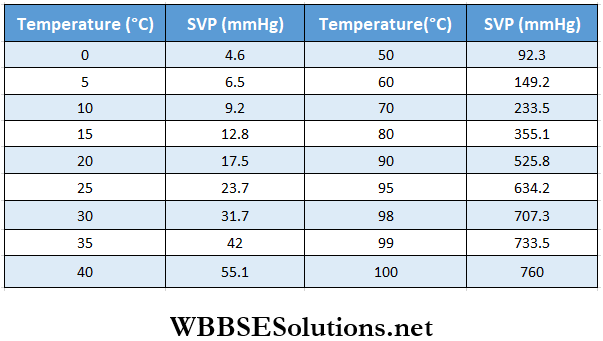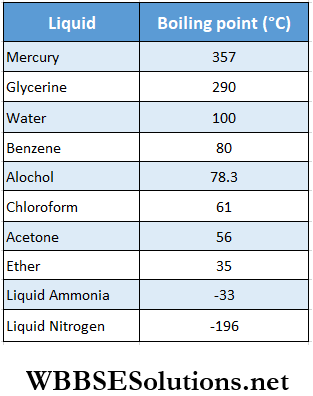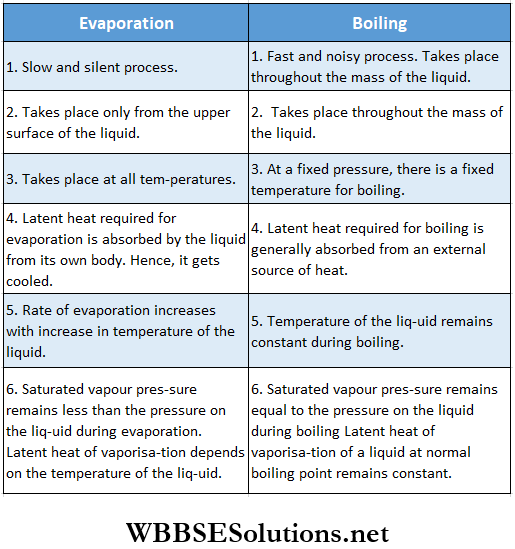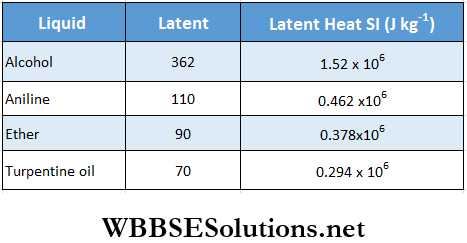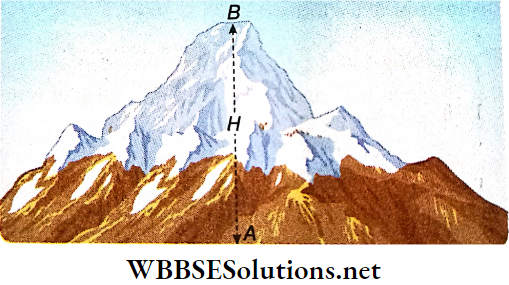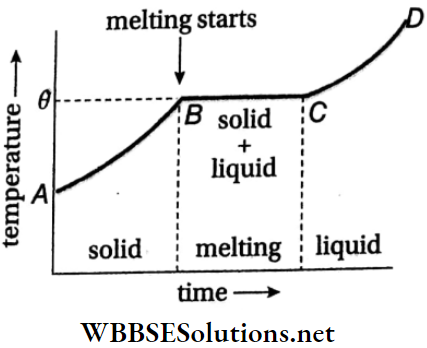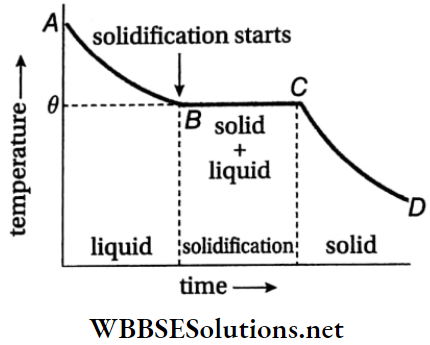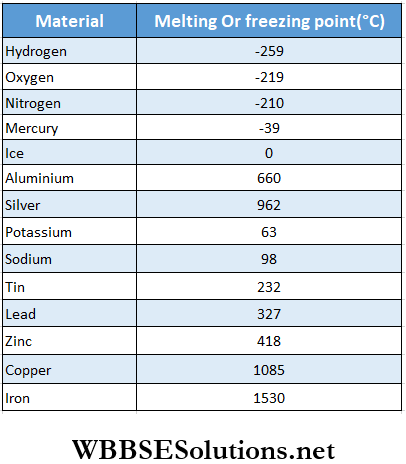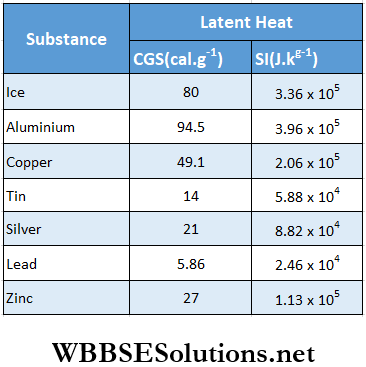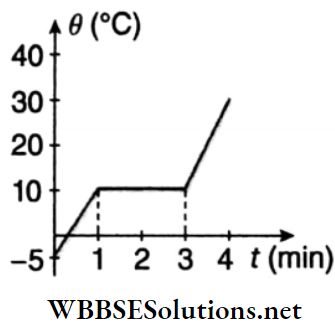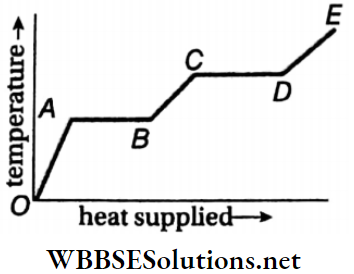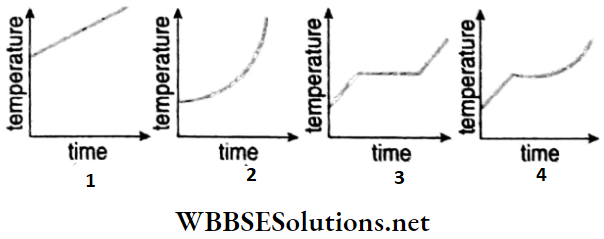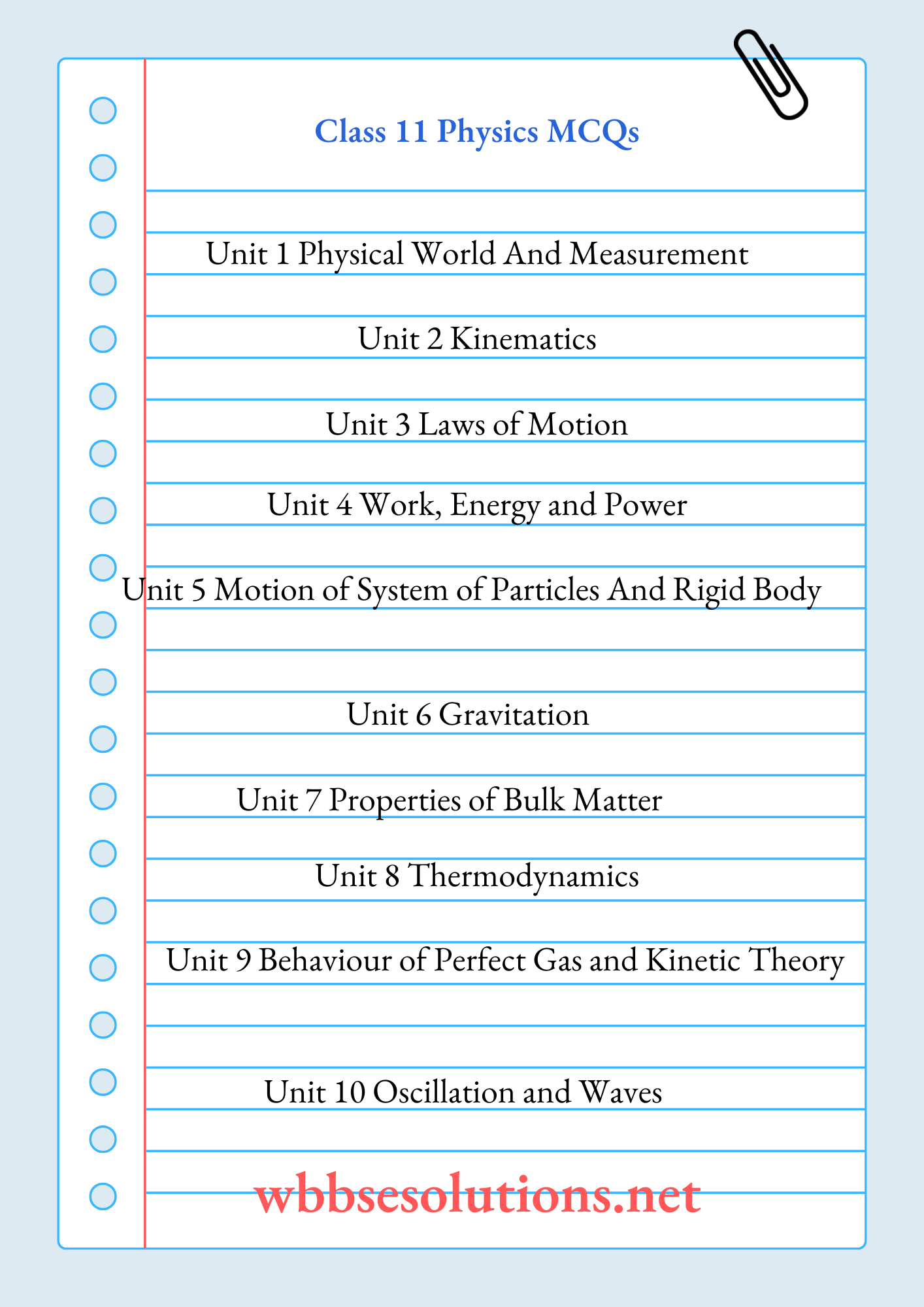Properties Of Bulk Matter – Change Of State Of Matter Introduction
Matter generally exists in three states or phases—solid, liquid and gaseous. When a substance changes from one state to another, it is said to have undergone a change of state or phase change or phase transition.
As matter changes from the solid to its liquid state, the phenomenon is called melting or fusion. The reverse phenomenon i.e., change from the liquid to the solid state is termed as freezing or solidification.
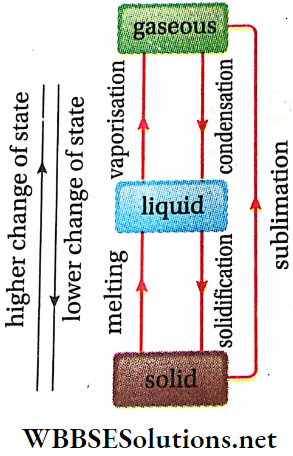
- Similarly, the change of a liquid to a gas, and the change from a gaseous state to the liquid state are called vaporisation and condensation respectively. Sublimation is the direct conversion from solid to gaseous state.
- To bring about a change of state of a substance, the application of heat to or the extraction of heat from the substance is essential. The change of state of a substance, during which heat is absorbed by the substance is called a higher change of state (for example: melting and vaporisation).
- On the other hand, the change of state of a substance, during which heat is extracted from the substance is called lower change of state (for example: solidification and condensation.
Read and Learn More: Class 11 Physics Notes
Properties Of Bulk Matter – Change Of State Of Matter Latent Heat
When water boils at 100°C it does not change its temperature until it completely converts into vapour. So the applied heat changes the water from its liquid state to its vapour state.
- It, too, cannot be measured. Again, the temperature of a mass of at 100°C does not fall until the vapour completely converts into water by releasing heat.
- Latent Heat Definition: The amount of heat extracted or applied to change the state of unit mass of a substance at a constant temperature, is called the latent heat of the substance for that change of state.
Hence, corresponding to different changes of state, latent heat are of four types:
- Latent heat of fusion
- Latent heat of solidification
- Latent heat of vaporisation
- Latent heat of condensation
Explanation of latent heat: The molecules of a solid substance are arranged in a fixed crystalline structure and therefore the solid has a definite shape. On the other hand, the molecules of a liquid are not so arranged and so they have no fixed shape.
- Hence, change of a solid to its liquid state, or melting, means breaking up of the crystalline structure. Latent heat supplies the necessary energy for breaking this crystalline arrangement of molecules and hence there is no change in temperature.
- Similarly, at atmospheric pressure, the intermolecular attraction in gases is very small in comparison to that in solids and in liquids. The intermolecular separations in gases are much higher.
- Hence, change of a liquid to its gaseous state, i.e., vaporisation, means the total separation of the molecules from their mutual attraction. The energy required for this purpose is supplied by the latent heat.
Since the energy required to increase the intermolecular separation in changing a liquid to gas is much higher than that in changing a solid to liquid latent heat of vaporisation is higher than the latent heat of fusion for a substance.
Properties Of Bulk Matter – Change Of State Of Matter Triple Point
There is a pressure and temperature at which the solid, liquid and gaseous states of a substance can coexist in equilibrium. This is called the triple point of that substance.
The graph of pressure (p) versus temperature (T) for a substance is sometimes known as phase diagram. the phase diagrams of water and carbon dioxide respectively. Phase diagram generally divides the p- T plane in three regions—solid, liquid and gaseous regions.
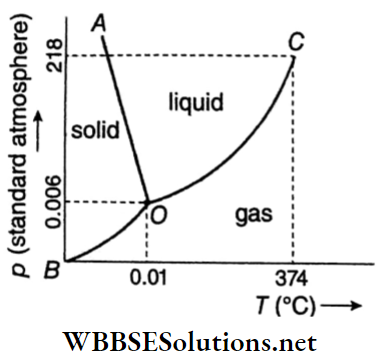
Lines BO, AO and CO are called sublimation curve, fusion curve and vaporisation curve respectively. The points on the sublimation curve denote the pressures and temperatures at which the solid and gaseous states of the substance coexist in equilibrium.
Similarly, the points on fusion curve denote pressures and temperatures at which the solid and liquid states coexist in equilibrium. Again, the points on vaporisation curve denote pressures and temperatures at which the liquid and gaseous states coexist in equilibrium.
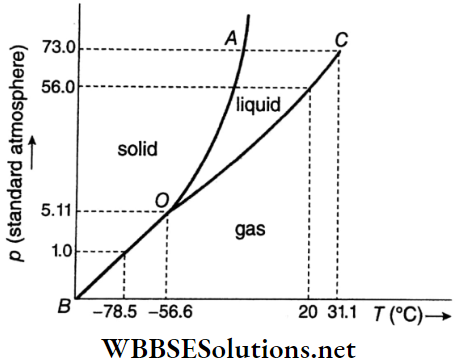
The curves BO, AO and CO meet at point O. The point O denotes the pressure and temperature at which the three states—solid, liquid and gaseous states— coexist in equilibrium. This means that the point O is the triple point. The pressure and temperature at triple point of water are 4.58 mm Hg and 0.01°C respectively.
Properties Of Bulk Matter – Change Of State Of Matter Triple Point Numerical Examples
Example 1. A copper calorimeter of mass 100 g contains a mixture of ice and water of total mass 40 g. A piece of copper of mass 100 g at 100°C is dropped in the calorimeter and finally, the temperature of the system becomes 10°C. Find the mass of ice in the initial ice-water mixture. Specific heat of copper = 0.09 cal · g-1 · °C-1 and latent heat of fusion of ice = 80 cal · g-1.
Solution:
A copper calorimeter of mass 100 g contains a mixture of ice and water of total mass 40 g. A piece of copper of mass 100 g at 100°C is dropped in the calorimeter and finally, the temperature of the system becomes 10°C.
Let initial mass of ice in the calorimeter = xg.
Hence, mass of water initially present at 0°C was (40 – x) g.
Heat lost by the copper piece
= 100 x 0.09 x (100 – 10) = 810 cal
Heat gained by ice for melting = x x 80 = 80x cal and heat gained by that melted ice to raise its temperature to 10°C = xx 1 x10 cal = 10 xcal.
Heat gained by (40 – x) g of water to come up to 10°C = (40 – x) x 1 x 10 cal.
Heat taken by the calorimeter = 100 x 0.09 x 10 = 90 cal
As heat lost = heat gained,
80x+ 10x+ (40 -x) x 10 + 90 = 810 or, 80x = 320
∴ x = 4
∴ There was 4 g of ice in the mixture.
Example 2. A calorimeter of water equivalent 50 g contains 250 g of water and 200 g of ice at 0°C. 200 g of steam at 100°C is passed through the ice-water mixture. Find the final temperature of the mixture and its total mass in the calorimeter. Latent heat of fusion of ice = 80 cal · g-1 and that of vaporisation of water = 540 cal · g-1.
Solution:
A calorimeter of water equivalent 50 g contains 250 g of water and 200 g of ice at 0°C. 200 g of steam at 100°C is passed through the ice-water mixture.
Heat given up due to condensation of 200 g of steam at 100°C
= 200 x 540 = 108000 cal
Heat absorbed by 200 g ice at 0°C to form water at 0°C = 200 x 80 = 16000 cal.
Heat absorbed by the calorimeter, water and melted ice to reach 100°C from 0°C = (50 + 250 + 200) x 100 = 50000 cal
Maximum heat that could be taken in =16000 + 50000 = 66000 cal, which is much less than 108000 cal.
1. The final temperature of mixture is 100°C and the entire 200 g of steam is not condensed.
This mixture contains molten ice, water and x g (say) of condensed steam. Hence, (200 -x)g of steam passes through as steam.
2. Heat given up = x x 540 cal and heat taken in = 66000 cal.
∴ x x 540 = 66000
∴ x = \(\frac{66000}{540}=122.2 \mathrm{~g}\)
Total mass of the mixture = water + molten ice + con¬densed steam =250 + 200 + 122.2 = 572.2 g.
Example 3. A metal piece of mass 48.5 g at 10.7°C, placed in a flow of steam can condense 0.762 g of steam. Find the specific heat capacity of the metal. Latent heat of steam = 537 cal · g-1.
Solution:
A metal piece of mass 48.5 g at 10.7°C, placed in a flow of steam can condense 0.762 g of steam.
Let the specific heat capacity of the metal be s cal · g-1 · °C-1.
Due to the flow of steam, the temperature of the metal rises to 100°C on condensation of 0.762 g of steam.
Hence, heat given up by the steam = 0.762 x 537 cal.
Heat received by the metal =48.5 x s x (100 – 10.7) cal
∴ Heat lost = heat gained
∴ 0.762×537 = 48.5 xs(100-10.7)
or, s = 0.094
Therefore, the specific heat capacity of the metal is 0.094 cal · g-1 · °C-1.
Example 4. In an Industrial unit, 10 kg of water is to be heated per hour from 20°C to 80°C. To achieve this, steam from a boiler at 150°C is circulated through a copper coil immersed in water. Steam condenses inside the coil, changes to water at 90°C and flows back to the boiler for recirculation. Estimate the mass of steam in kg, required per hour. Specific heat of steam = 1 cal · g-1 · °C-1 and latent heat of steam = 540 cal · g-1.
Solution:
In an Industrial unit, 10 kg of water is to be heated per hour from 20°C to 80°C. To achieve this, steam from a boiler at 150°C is circulated through a copper coil immersed in water. Steam condenses inside the coil, changes to water at 90°C and flows back to the boiler for recirculation.
Amount of heat required per hour by 10 kg of water = 10 x 103 x 1 x (80 – 20) = 60 x 104 cal.
Let the mass of steam required be x kg.
Hence, heat given up by the steam
= x x 103 x 1 x (150- 100) + x x 103 x 540 + x x 103 x 1 x (100 – 90)
= x x 103 x (50 + 540 + 10) = x x 104 x 60 cal
According to the problem, x x 104 x 60 = 60 x 104
or x = 1
Thus the mass of tne steam requires per hour is 1 kg.
Example 5. 10 g of a solid at -10°C needs 64 cal of heat to rise up to -2°C remaining in its solid state. To raise its temperature from -10°C to 1°C and 3°C (in liquid state), required heat are 880 cal and 900 cal respectively. If the specific heats of the material in its solid and liquid states be s1 and s2, calculate their values. If L is the latent heat of fusion and tm is the melting point in °C, then show that, L = 79 + 0.2 tm.
Solution:
10 g of a solid at -10°C needs 64 cal of heat to rise up to -2°C remaining in its solid state. To raise its temperature from -10°C to 1°C and 3°C (in liquid state), required heat are 880 cal and 900 cal respectively. If the specific heats of the material in its solid and liquid states be s1 and s2
Heat required to change the temperature of the solid from -10°C to -2°C = 10s1{-2-(-10)} = 80s1.
According to the problem, 80s1 = 64.
∴ s1 = 0.8 cal · g-1 · °C-1
Difference in the heat required to raise the temperature of the object in its liquid state from -10°C to 1°C and from -10°C to 3°C = 10 x s2 x (3 – 1) = 20s2.
According to the problem, 20s2 = 900 – 880 = 20 or, s2 = 1 cal · g-1 · °C-1
If the melting point is tm, heat required to change the body in solid state at -10°C to its liquid state at 1°C
= 10 x s1{tm-(-10)} + 10L+ 10 x s2 x (1 – tm)
= 8(tm+10) + 10L +10(1 – tm) = 880
According to the problem,
8(tm+ 10) + 10L+ 10(1 – tm) = 880
or, 10L = 880 – 80- 10- 8tm+ 10tm = 790 +2tm
or, L=79 + 0.2tm (Proved).
Example 6. A piece of copper of mass 7.5 g at 27°C Is dropped into boiling liquid oxygen (boiling point = -183°C). Oxygen vapour thus formed occupies 1.83 L space at 20°C and at 750 minHg pressure. Calculate the latent heat of the vaporisation of oxygen. Specific heat of copper = 0.08 cal · g-1 · °C-1 and density of oxygen at STP 1.429 g · L-1.
Solution:
A piece of copper of mass 7.5 g at 27°C Is dropped into boiling liquid oxygen (boiling point = -183°C). Oxygen vapour thus formed occupies 1.83 L space at 20°C and at 750 minHg pressure.
Let at STT, V2 = volume of the oxygen vapour formed.
Given p1 = 750 mmHg, T1 = 273 + 20 = 293 K,
⇒ \(V_1=1.83 \mathrm{~L}, p_2=760 \mathrm{mmHg}, T_2=273 \mathrm{~K}\)
Now, \(\frac{p_1 V_1}{T_1}=\frac{p_2 V_2}{T_2}\)
or, \(V_2=\frac{p_1 V_1 T_2}{T_1 p_2}\)
or, \(V_2=\frac{750 \times 1.83 \times 273}{293 \times 760}=1.68 \mathrm{~L}\)
∴ Mass of oxygen vapour formed = 1.68 x 1.429 g
Let L be the latent heat of the vaporisation of liquid oxygen. Heat taken for vaporisation = 1.68 x 1.429 x Leal
Heat given up by the piece of copper = 7.5 x 0.08(27 + 183) = 7.5 x 0.08 x 210 cal
∴ Heat supplied = heat absorbed
∴ 7.5 x 0.08 x 210 = 1.68 x 1.429 x L
or, L = \(\frac{7.5 \times 0.08 \times 210}{1.68 \times 1.429}=52.5 \mathrm{cal} \cdot \mathrm{g}^{-1}\)
Example 7. 100 g of water is raised from 24°C to 90°C with the help of steam. Determine the quantity of steam required for this purpose. Latent heat of steam = 540 cal · g-1.
Solution:
100 g of water is raised from 24°C to 90°C with the help of steam.
Let the required quantity of steam = m g.
Amount of latent heat released by m g steam at 100°C = m x 540 = 540 m cal
Now, heat is released by this 100 g of condensed water at 100°C to reach 90°C = m x 1 x (100 – 90) = 10 m cal.
∴ Total heat released = 540 m + 10 m = 550 m cal
The amount of heat required by 100 g of water at 24 °C to rise up to 90°C = 100 x 1 x (90 – 24) = 6600 cal.
Heat lost = heat gained
∴ 550 m = 6600 or, m = 12
So, the quantity of steam required is 12 g
Example 8. A chunk of ice is continuously supplied with heat. After 2 s the ice begins to melt and in another 20 s the entire ice melts. Determine the initial temperature of ice. Specific heat of ice = 0.5 cal · g-1 · °C-1 and latent heat of fusion of ice = 80 cal · g-1.
Solution:
A chunk of ice is continuously supplied with heat. After 2 s the ice begins to melt and in another 20 s the entire ice melts.
Let rate of supply of heat = x cal · s-1, initial temperature of ice = -θ° C and amount of ice = mg
Since, the ice begins to melt after 2 s, we can assume that the temperature of ice becomes 0°C at that time.
So, m x 0.5 x [0 – (-θ)] = 2x……(1)
or, mdθ = 4x
In the next 20 s the ice melts completely
∴ m x 80 = 20x …..(2)
So, from (1) and (2) we get, 6 = 16
∴ The initial temperature of the ice was -16°C.
Example 9. What will be the result of extraction of 69000 cal of heat from 100 g of steam at 100°C? Latent heat of condensation of steam = 540 cal • g-1
Solution:
The amount of heat extracted from 100 g of steam at 100°C to condense it to water at 100°C = 100 x 540 = 54000 cal.
The amount of heat extracted to bring down the temperature of this water from 100°C to 0°C = 100 x 1 x 100 = 10000 cal.
Total heat extracted in the two steps = 54000 + 10000 = 64000 cal
The additional amount of heat extracted = 69000 – 64000 = 5000 cal
This will freeze some amount of water at 0°C.
The amount of frozen ice = \(\frac{5000}{80}\) = 62.5 g.
Hence, finally, there will be a mixture of 62.5 g of ice and (100-62.5) = 37.5 g of water at 0°C.
Example 10. kg of Ice at -20°C is mixed with 5 kg of water at 20°C in a container of negligible thermal capacity. Calculate the amount of water finally left in the container. Specific heat of water = 1 kcal · kg-1 °C-1, specific heat of ice = 0.5 kcal · kg °C-1 and latent heat of fusion of ice = 80 kcal · kg-1.
Solution:
kg of Ice at -20°C is mixed with 5 kg of water at 20°C in a container of negligible thermal capacity.
Amount of heat given up by 5 kg of water to come at 0°C from 20°C = 5 x 1 x (20 – 0) = 100 kcal
Amount of heat taken by 2 kg ice at -20 °C to reach 0°C = 2 x 0.5 x {0 – (-20)} = 20 kcal
Amount of heat taken by 2 kg of ice at 0°C to melt into water at 0°C = 2 x 80 = 160 kcal
∴ Total amount of heat taken by 2 kg ice at -20°C to turn into the water at 0°C = 160 + 20 = 180 kcal
Obviously, the ice does not melt totally as the heat required to melt the total ice is greater than the heat given up.
∴ Amount of melted ice = \(\frac{100-20}{80}=\frac{80}{80}=1 \mathrm{~kg}\)
Hence, finally the amount of water in the container = 1 + 5 = 6 kg.
Example 11. A closed vessel is partly filled with water. While extracting air from the vessel by a pump, due to quick evaporation water freezes Into Ice. What fraction of the Initial mass of water can be frozen by this process? I .a tent heat of solidification of Ice = 00 cal · g-1 and latent heat of vaporisation of water = 540 cal · g-1.
Solution:
A closed vessel is partly filled with water. While extracting air from the vessel by a pump, due to quick evaporation water freezes Into Ice.
Let m1 = mass of water frozen and m2 = mass of water vaporised. Total mass of water (m) = m1 + m2.
Heat given out by m1g of water for changing to Ice = 80 m1 cal
And heat absorbed by m2g of water for evaporation = 540m2 cal
By calorimetric principle, 540m2 = 80m1
∴ \(m=m_1+\frac{80}{540} m_1=\frac{31}{27} m_1\)
∴ \(m_1=\frac{27}{31} m\)
∴ 27/31 part of the initial amount of water changes to ice.
Properties Of Bulk Matter – Change Of State Of Matter Synopsis
Latent heat: The amount of heat that should be applied to or extracted from a substance of unit mass for its change of state at a constant temperature, is called the latent heat for that particular change of state.
Melting point: The temperature at which a solid substance begins to melt under a definite pressure is called the melting point of that substance at that pressure.
Freezing point: The temperature at which a liquid substance begins to freeze under a definite pressure is called the freezing point of that substance at that pressure.
Eutectic temperature: The temperature at which a solution as a whole turns into a solid, is called the eutectic temperature of that solution.
- Latent heat of fusion of ice is 80 cal • g-1.
- For substances which undergo contraction in volume on melting, the melting point decreases due to increase in pressure, i.e., they melt at a lower temperature.
- For substances which undergo expansion in volume on melting, the melting point increases due to increase in pressure, i.e. they melt at a higher temperature.
- The phenomenon of melting of ice under pressure and its resolidification when the pressure is released, is called regelation.
Evaporation: When vaporisation of a liquid occurs slowly from the exposed surface of the liquid at any temperature, the process is called evaporation.
- At a given temperature, if a closed space contains the maximum possible amount of vapour then that vapour is called saturated vapour. The pressure exerted by that vapour is called saturated vapour pressure.
- At a given temperature, if a closed space contains less amount of vapour than the maximum possible amount of vapour that it can contain, then the vapour is called unsaturated vapour. The pressure exerted by that vapour is called unsaturated vapour pressure.
- At constant temperature unsaturated vapour obevs Boyle’s law. It is seen that unsaturated vapour pressure is directly proportional to the temperature when volume remains constant, similar to the pressure law for gases.
Saturated vapour does not obey Boyles law nor the pressure law. The definite temperature for a gaseous substance, above which it cannot be liquefied by the application of pressure only, is called the critical temperature for that gaseous substance.
Boiling: When vaporisation of a liquid occurs rapidly throughout the whole of the liquid at a fixed temperature, the process is called boiling.
Sublimation: It is another form of vaporisation. When a solid turns into vapour directly without going through the liquid state, the process is known as sublimation.
Boiling point: The definite temperature at which a liquid boils under a fixed pressure is called the boiling point of that liquid.
Latent heat of vaporisation of water is 537 cal • g~1 .
The pressure and temperature at which the solid, liquid and gaseous states of a substance coexist in equilibrium is known as the triple point of the substance.
Properties Of Bulk Matter – Change Of State Of Matter Useful Relations For Solving Numerical Problems
During change of state, heat gained or lost by a substance, H = mL
[where, m =inass of the substance and L = latent heat for the change of state]
During change in temperature of a substance, heat gained or lost, H = mst
[where, s = specific heat of the substance, t = change in temperature]
Properties Of Bulk Matter – Change Of State Of Matter Very Short Answer Type Questions
Question 1. What is the heat gained or lost by a substance during its change of state at a constant temperature called?
Answer: Latent heat
Question 2. What is the unit of latent heat in CGS system?
Answer: cal • g-1
Question 3. ‘Boiling point of water is higher at Darjeeling than that at Kolkata’ — state whether the statement is true or false.
Answer: False
Question 4. What is the latent heat of melting of ice in cal • g-1?
Answer: 80
Question 5. What is the latent heat of the vaporisation of water in cal · g-1? Answer: 540
Question 6. Due to increase in pressure on ice, its melting point _________
Answer: Decreases
Question 7. Name the phenomenon of melting of ice under pressure and its resolidification on withdrawal of pressure.
Answer: Regelation
Question 8. Name the process of vaporisation that occurs slowly from the upper surface of a liquid at any temperature.
Answer: Evaporation
Question 9. The boiling point of a solution is _______ than the boiling point of the solvent.
Answer: Higher
Question 10. Cooking becomes rapid in a pressure cooker, because the _________ of water increases due to increase of superincumbent pressure.
Answer: Boiling point
Properties Of Bulk Matter – Change Of State Of Matter Assertion Reason type
Direction: These questions have statement 1 and statement 2. Of the four choices given below, choose the one that best describes the two statements.
- Statement 1 is true, statement 2 is true statement 2 is a correct explanation for statement 1.
- Statement 1 is true, statement 2 is true statement 2 is not a correct explanation for statement 1.
- Statement 1 is true, statement 2 is false.
- Statement 1 is false, statement 2 is true.
Question 1.
Statement 1: In the pressure-temperature (p-T) phase diagram of water the slope of the melting curve is found to be negative.
Statement 2: Ice contracts on melting to water.
Answer: 1. Statement 1 is true, statement 2 is true statement 2 is a correct explanation for statement 1.
Question 2.
Statement 1: Melting of solid causes no change in internal energy.
Statement 2: Latent heat is the heat required to melt a unit mass of solid.
Answer: 4. Statement 1 is false, statement 2 is true.
Question 3.
Statement 1: Water kept in an open vessel will quickly evaporate on the surface of the moon.
Statement 2: The day temperature at the surface of the moon is higher than boiling point of water.
Answer: 2. Statement 1 is true, statement 2 is true statement 2 is not a correct explanation for statement 1.
Question 4.
Statement 1: If 1 g of ice is mixed with 1 g of water at 80 °C, then the final temperature of the mixture is 0°C.
Statement 2: Ice melts.
Answer: 2. Statement 1 is true, statement 2 is true statement 2 is not a correct explanation for statement 1.
Question 5.
Statement 1: The specific heat of ice at 0°C is infinite.
Statement 2: When heat is supplied to ice at 0°C, the change in temperature is zero as the ice melts.
Answer: 1. Statement 1 is true, statement 2 is true statement 2 is a correct explanation for statement 1.
Properties Of Bulk Matter – Change Of State Of Matter Match Column 1 And Column 2.
Question 1. In a container of negligible mass ra g of steam at 100°C is added to 100 g of water that has a temperature 20 °C. If no heat is lost to the surroundings at equilibrium, match the items given in Column 1 with that in Column 2.
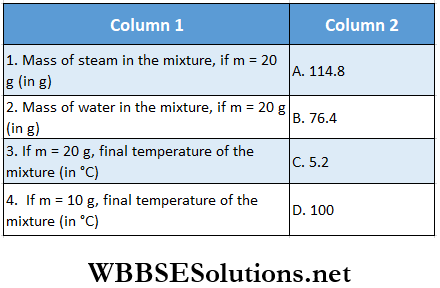
Answer: 1. C, 2. A, 3. D, 4. A
Question 2. Match the Column 1 with Column 2 according to data collected from the given graph.
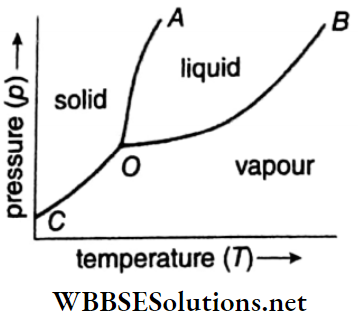
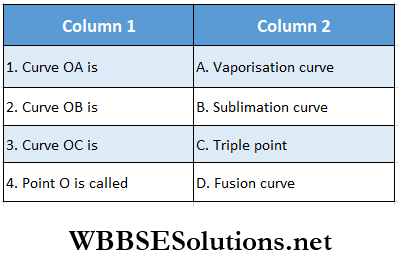
Answer: 1.D, 2. A, 3. B, 4. C
Question 3. Match the Column 1 with Column 2 according to data collected from the given graph.
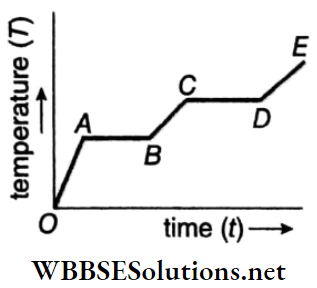
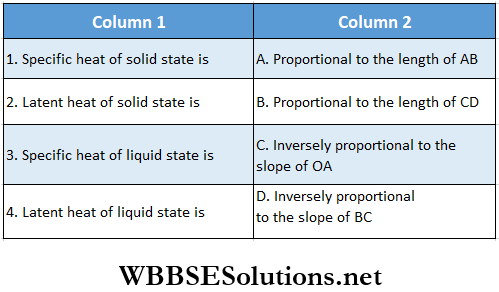
Answer: 1. C, 2. A, 3. D, 4. B











